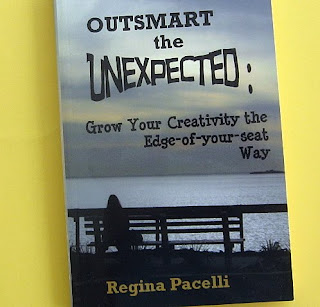Earlier in the summer, Regina Pacelli sent me a message asking if I’d like to read her book, Outsmart the Unexpected: Grow Your Creativity the Edge-of-your-seat-Way.
Because I am always open to reading new books on creativity, I agreed.
From the beginning, I realized this wasn’t your typical creativity book. You know the one I am referring too! The one that promises to hold all the secrets to being more creative. Well, this is not that book.
Regina has no secrets to share, in fact there is no academic research, no stories of uber-creatives and no exercises that guarantee you will be more creative. Instead, she presents you with a couple of dozen ‘cliffhangers.’
These are short, almost impossible to believe stories that you have to figure out the ending to thus expanding your creative thinking skills.
The premise reminded me a of book that was out in the late 90s that my friends and I used to test each other with. It was a ‘what if’ style of book with really wild scenarios.
By the end of the book, I am not sure if I felt more creative, but I enjoyed the ‘cliffhangers’ and the opportunity to come up with my own solutions, because I think we are often always given the correct answer and that stifles our own creative and problem-solving abilities.
While I read the book on my own (each night before bed, which resulted in some crazy dreams!), Regina gives several great ideas to use the book in a more collaborative way. She suggests you use it as a party game, online discussion or chat. I would also add that it would be helpful as a creative writing prompt!
- How can you ‘Outsmart the Unexpected?’







